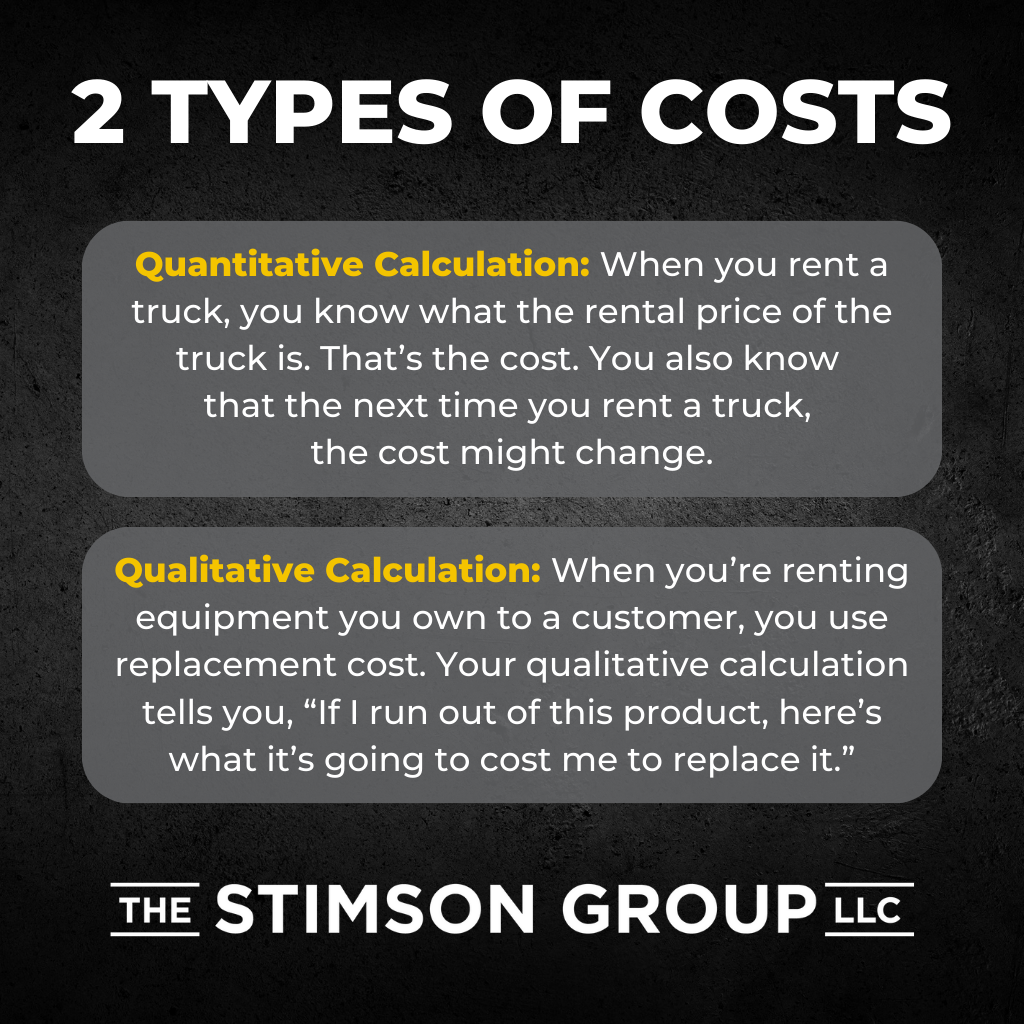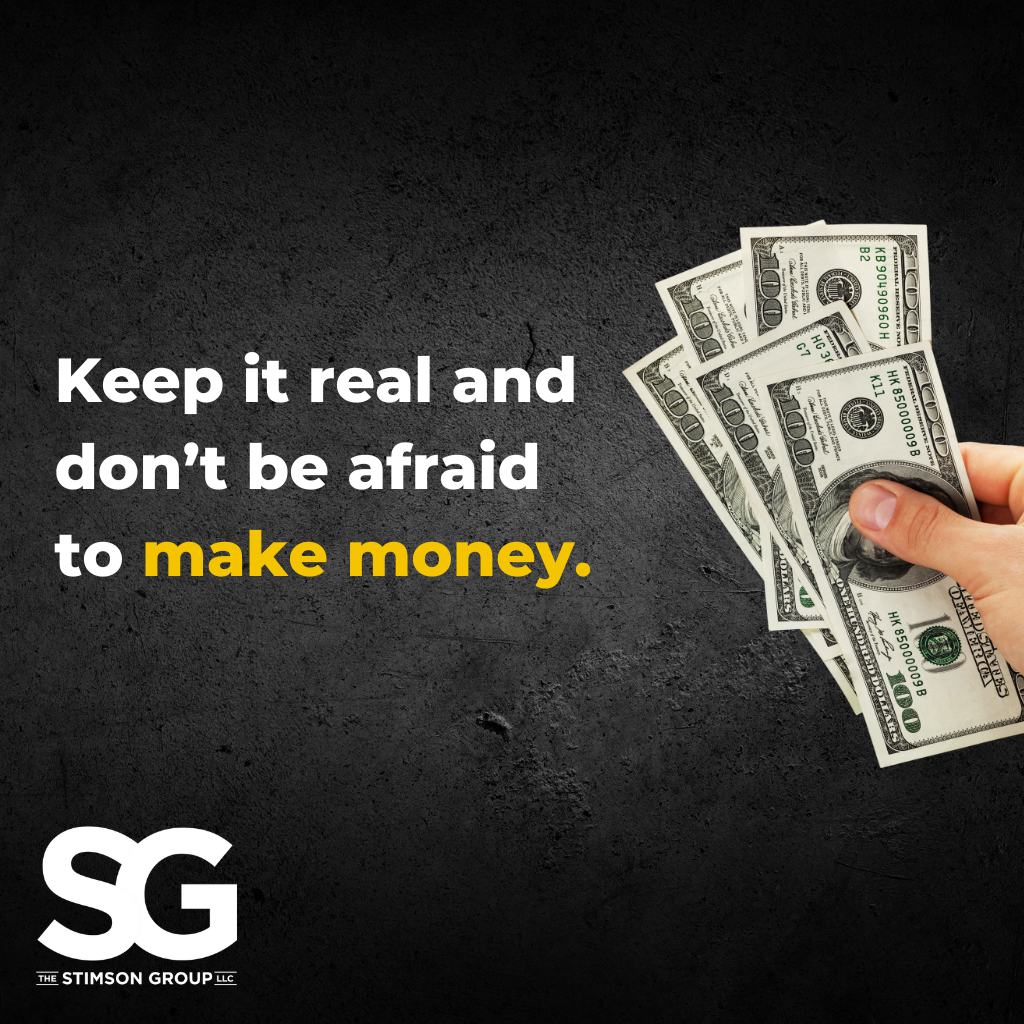
I do a lot of change management work. I know from experience that when people are faced with change, a fear of the unknown manifests as objections and concerns. In unfamiliar territory, people are naturally trepidatious.
If you spend years not making a lot of money or just getting by, you can become comfortable with the status quo and feel like it’s all you deserve. This is the most pervasive fear I run into. Too many owners think they’re not supposed to be making money because making money is hard.
They believe easy-sounding solutions are never going to work because the fear of making money is often based on the fear of rejection — which is also a fear of making money.
Owners say to themselves, “For me to make more money, I need to introduce risk into my relationship with my customers, and they might reject me. I can’t afford rejection because I need to make money.”
These owners find themselves in a vicious cycle in which they need the customers more than the customers need them. They’re willing to give up making money to assuage these fears and concerns, and they end up talking about price.
Price is the fear most owners embrace. They emphatically believe that price really matters and that it’s all customers care about. If the business changes its prices, the customers will freak out.
There’s some truth to this. We’ve trained a generation of customers to be price-centric and price-sensitive.
In order to retrain our customers, we first have to retrain ourselves. The first step is asking, “How do I overcome my fear of price so I can overcome my fear of making money?”
Relearning Pricing
In our industry, pricing is made up. Our prices are just based on how we feel, or on what someone else charges — which is also made up.
Nevertheless, pricing seems permanent, which is why people are so afraid of changing prices. Customers crave price permanence. They use your fear of change to say, “Hey, why the price change? I want the price I had last year.”
Customers are supposed to complain when prices go up — they’re famous for it. But when you allow customer comments about pricing to reinforce your fear, you put yourself in a bad spot.
The first step to changing your relationship with price is understanding that pricing should be based on cost.
Selling from cost is not a complicated concept. If you sell something for less than what you paid for it, you lose money. Therefore, you need to sell something for more than you paid for it to make money. Everyone can agree on that.
The question then becomes, “How much should I sell it for?” That’s a margin question. As I’ve said before, margin is commensurate with risk. The higher the risk of the thing you’re selling, the higher the margin you should expect to earn because you’re assuming the risk of the product or service.
However, if your concept of pricing is based on what you’ve always charged or what your customers are used to, you probably haven’t looked at your costs lately. If you have, you’ve merely complained about the higher price of things without feeling the need to pass the price on to your customers.
To overcome the fear of passing cost increases to your customers, you have to become intimate with your costs.
I can’t tell you what your prices need to be, but I can tell you there are two types of costs.
2 Types of Costs
- Quantitative Calculation: When you rent a truck, you know what the rental price of the truck is. That’s the cost. You also know that the next time you rent a truck, the cost might change.
- Qualitative Calculation: When you’re renting equipment you own to a customer, you use replacement cost. Your qualitative calculation tells you, “If I run out of this product, here’s what it’s going to cost me to replace it.”
That replacement cost is the direct cost if you need to outsource or buy the product or service. It doesn’t mean there’s a published price. It means you’re looking at the entire supply chain and figuring out the most likely price you can count on. It’s not the highest or lowest cost.
You add margin to cost because your buying power is part of your value proposition. Don’t give your buying power to the customers. Add margin to it. That’s how you make money.

The Objection
The standard objection to pricing based on replacement cost is this: “The reason I own my trucks is so I can reduce my cost. My internal cost is what matters because I want to sell to the customer for less.”
This is a fear-based reaction. If you’re telling the customer you own equipment and have employees and internal resources to save them money, you’re essentially saying, “Here’s all my money!”
What’s the point of having all these resources if they don’t allow you to make a higher profit? Passing your cost advantage on to your customer sounds like a great value proposition, but it’s actually a fear-based selling model.
Price-Based Selling Is a Lie
Selling from price is a white lie. When you sell from price, you lie to yourself and your customers. The lie is that the price is fixed, costs don’t change, and there are no risks or economic factors that would affect the value of what you’re selling.
Price-based selling means saying that what you do is so commoditized that it’s easy to slap a price on it. Even worse is when you sell from price and then discount. Then you’re telling two lies: that price matters and that discount matters.
Selling From Cost Solves Problems
I know you’re not intentionally creating nefarious fabrications. You’re just doing what we’ve always done in this industry. You’ve never taken the time to really understand the implications of a price-based model. I’m here to tell you that there’s an alternative:
Selling from cost helps solve pricing problems because selling from cost never lies.
When selling from cost, the cost is always real. It’s always in real-time, which means it’s always updated. It’s never perfect, but it’s more accurate than price-based selling.
Let’s face it — if you use price-based selling and the cost basis changes, which can happen instantly, your prices don’t instantly change. But when you sell from cost and there’s a change in cost, you instantly change your price because you’re adding margin to cost.
The formula is simple. The Cost + The Worth (your margin) = Price.
If something costs you $100 and is worth $200, your margin is 50%. Add a 50% margin, which is 100% markup. You can tell your client that the price is $200.
Or, you can be smart and blend all your costs and margins into bundled services. Then, you present a fee model to your client.
For you, the fee model is the cost of all your services with all their independent margins properly calculated. This yields a net revenue number you can present to your customer. It becomes your gross profit.
Selling from cost solves many problems. It challenges you to figure out how to present numbers to customers in a way that doesn’t suck you back into fear-based selling wrapped around prices and outmoded concepts.
Keep it real and don’t be afraid to make money.






Leave a Reply